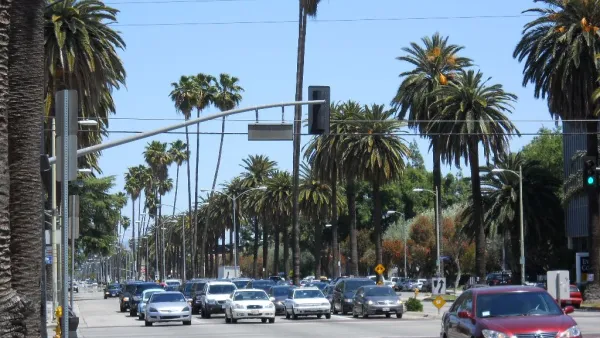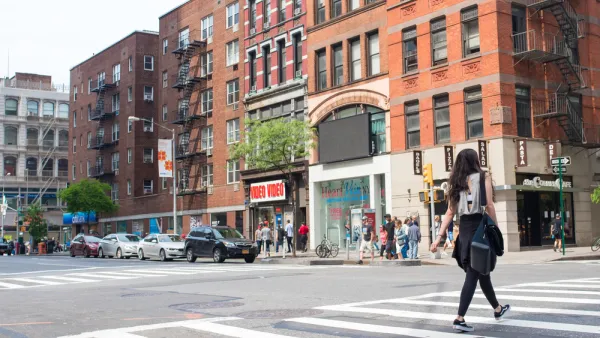Richard Florida interviews Jeff Speck about his new and highly praised book "Walkable City." The two authors discuss why cities should become more walkable to meet the needs of the "Walking Generation."
"The General Theory of Walkability explains how, to attract pedestrians, a place has to provide a walk that is simultaneously useful, safe, comfortable and interesting," says Speck. "This is extraordinarily difficult in most of our (driving) cities, and can only be accomplished when resources are concentrated where they can do the most good, rather than dispersed more evenhandedly across the city, which is the tendency." The cities that are becoming more walkable "understand that their sustainability (economic, health, and environmental) depends on it" and "want to attract and retain young, educated adults." 64 percent of college graduates now decide where they want to live first, and 77 percent want to live in America's urban cores "with ready access to nature, bike lanes, good transit, and street life."
Another related concept is the "Walkability Dividend" in which economist Joe Cortright showed how Portland's "urban growth boundary, coupled with its investments in bike lanes and transit, resulted in a remarkable phenomenon: Portland's per-capita vehicle miles traveled peaked in 1996." Portlanders drive 20 percent less than the national average, resulting in financial and time savings, cleaner air, and slimmer waistlines. From the other side, Speck points out that "[t]he typical American 'working' family now pays more for transportation than for housing" because "so many families found themselves not only underwater on their mortgages but also unable to afford the thirteen car trips per day generated by the average exurban homestead."
In his book Walkable City, Speck reconsiders the agenda he and his co-authors advanced in Suburban Nation. Why invest money and energy in building better suburbs, he says in response to a question from Florida, "when we have hundreds of historic downtown cores with underused infrastructure," "when demographic data tells us that 88 percent of the next 100 million American households will be childless," "when the epidemiologists are telling us that people live longer, healthier lives in cities and towns than in sprawl," and "when the environmentalists are telling us that New Yorkers have one-third the carbon footprint of the typical suburbanite"?
FULL STORY: Toward the Walkable City

Analysis: Cybertruck Fatality Rate Far Exceeds That of Ford Pinto
The Tesla Cybertruck was recalled seven times last year.

National Parks Layoffs Will Cause Communities to Lose Billions
Thousands of essential park workers were laid off this week, just before the busy spring break season.

Retro-silient?: America’s First “Eco-burb,” The Woodlands Turns 50
A master-planned community north of Houston offers lessons on green infrastructure and resilient design, but falls short of its founder’s lofty affordability and walkability goals.

Test News Post 1
This is a summary

Analysis: Cybertruck Fatality Rate Far Exceeds That of Ford Pinto
The Tesla Cybertruck was recalled seven times last year.

Test News Headline 46
Test for the image on the front page.
Urban Design for Planners 1: Software Tools
This six-course series explores essential urban design concepts using open source software and equips planners with the tools they need to participate fully in the urban design process.
Planning for Universal Design
Learn the tools for implementing Universal Design in planning regulations.
EMC Planning Group, Inc.
Planetizen
Planetizen
Mpact (formerly Rail~Volution)
Great Falls Development Authority, Inc.
HUDs Office of Policy Development and Research
NYU Wagner Graduate School of Public Service




























